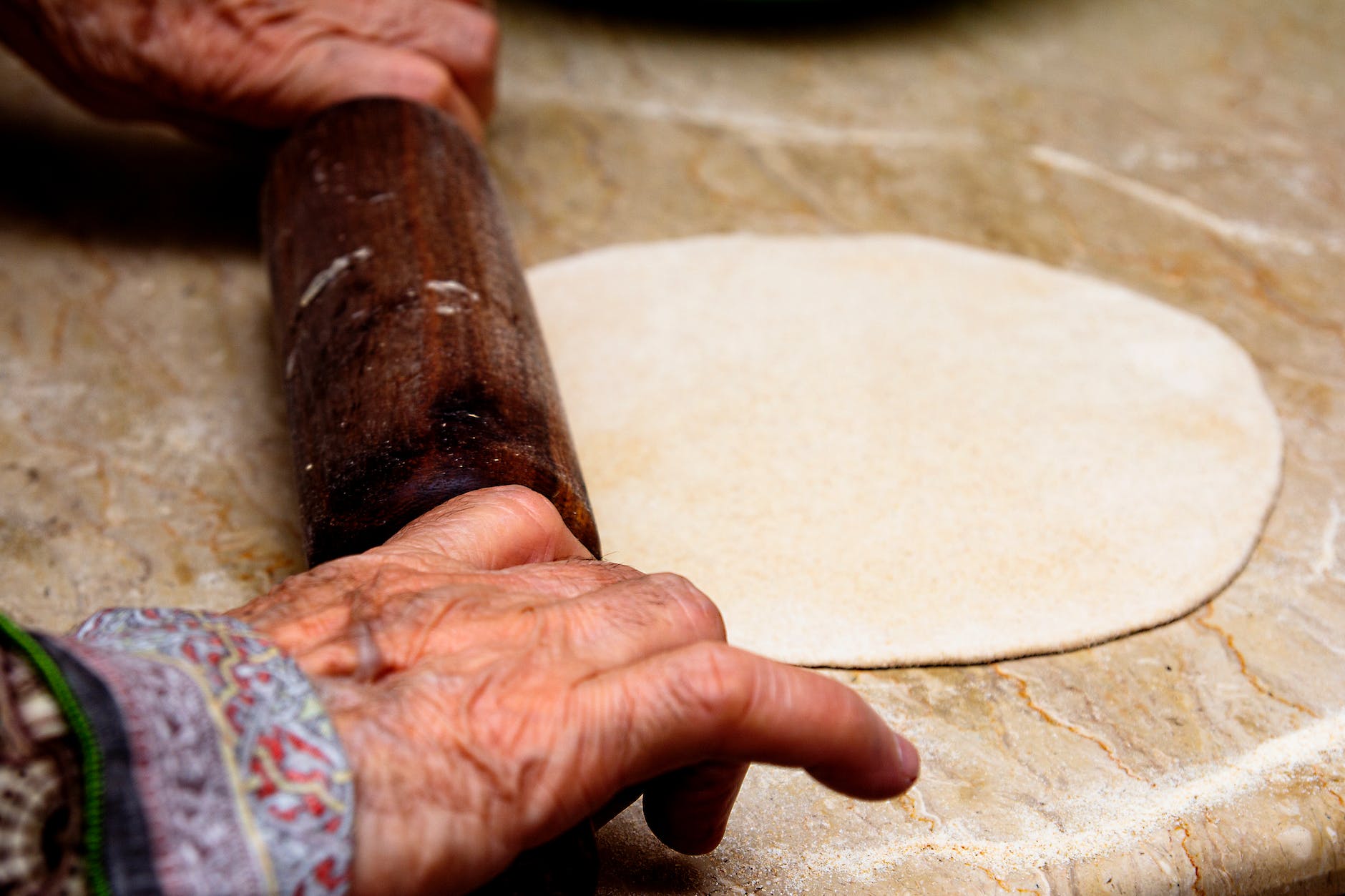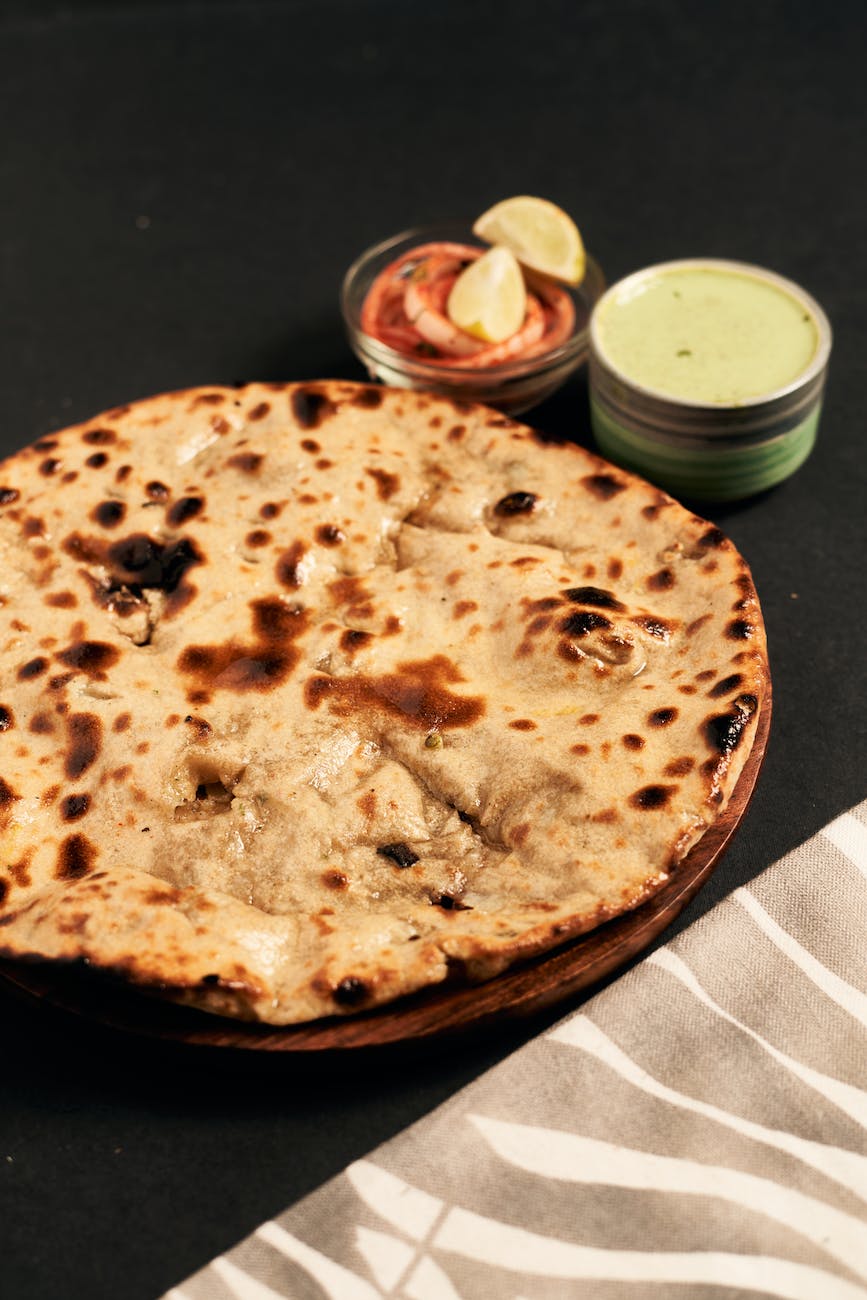Roti is my favorite Indian food and must be in my lunch. India is a multicultural country and has many shapes for making roti and chapati. In India, making chapati or roti is a unique skill that every woman possesses.

When you visit any restaurant in India, you hardly find chapati but Indian rotis that are made of white flour. It is also called maida. In restaurants, most popular vegetarian dishes are served with butter chapati. However, butter rotis and naan are also popular among young people these days.
There are many types of chapati, but one that I have known since my childhood is a traditional chapati without oil. It goes well with any dry vegetable like Bhendi, Baingan Bharata, Daal fry etc. I enjoy lunch when I travel to my cotton field farm, which runs across 3 acres with a water well. I always get hungry after trekking around hills and burning so many calories.
I have also seen people love fried chapati, in Maharashtrian restaurants and hotels, it is called Puri is served with bhaji. Therefore, together they are served as Puribhaji. It tastes awesome at breakfast. This is one of the famous dishes in India. Many foreign visitors come to India, and it becomes their favorite food. Every chapati or roti from a neighbor tastes unique but delicious.

Nutritional value of Chapati (wheat roti)
- Carbohydrates
- Protein
- Fiber
- Vitamins
- Minerals
Chapati, also known as roti, is a traditional Indian flatbread made from whole wheat flour. It is a staple food in many Indian households and is commonly consumed as part of meals. The nutritional value of chapati can vary depending on its size and thickness, but here is a general overview of its nutritional composition. My mom makes soft chapati with 60 grams of dough, which is round and perfectly goes with all types of vegetables and daal.
Carbohydrates: Chapati is primarily composed of carbohydrates, specifically complex carbohydrates from the whole wheat flour. These carbs provide energy and are a good source of dietary fiber.
Protein: Chapati contains a moderate amount of protein, again derived from the whole wheat flour. Protein is essential for building and repairing body tissues. I believe that vegetables have more protein than non-vegetables. We are all vegetarians, and it is always good for our health. It causes a lower number of diseases and keeps the overall body healthy.
Fiber: Whole wheat flour used in chapati contains dietary fiber, which is beneficial for digestive health. Fiber helps regulate bowel movements, prevents constipation, and may help lower cholesterol levels. If you want to add more fiber to your diet, chole is the best. Chole bhature is one of the most famous street foods in India.
Vitamins: Chapati is a good source of B vitamins, including thiamine (B1), riboflavin (B2), niacin (B3), and folate (B9). These vitamins play crucial roles in energy production, metabolism, and maintaining a healthy nervous system.
Minerals: Chapati provides minerals such as iron, magnesium, phosphorus, and potassium. Iron is essential for oxygen transport in the body, while magnesium, phosphorus, and potassium are involved in various physiological processes, including bone health, muscle function, and electrolyte balance. Make sure you avoid drinking too much RO water. It removes all the minerals from the body as well as from the existing food.
It’s important to note that the exact nutritional content of chapati can vary based on the recipe, preparation method, and specific brand or type of whole wheat flour used. Additionally, any additional ingredients like ghee (clarified butter) or oil used for cooking can contribute additional calories and fat. The best flour for chapati is wheat flour.
Wheat flour is also used with other flours like bajari, sorghum to make multigrain phulka chapati with butter. It tastes delicious and has important nutritional value. My mother used to make homemade roti, but she used wheat flour instead of white flour. India eats 60% more chapati and roti than rice, except for South Indians.






